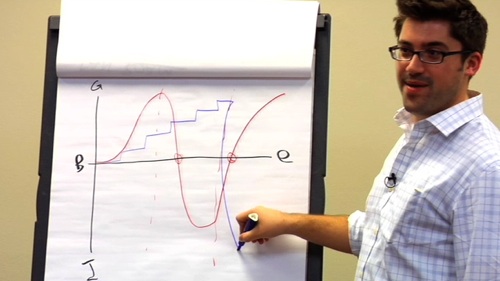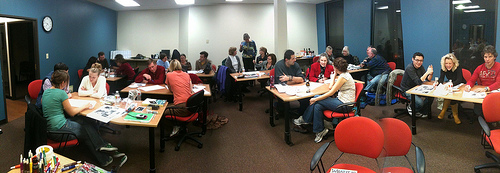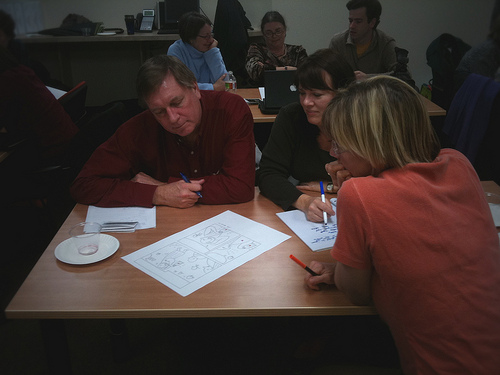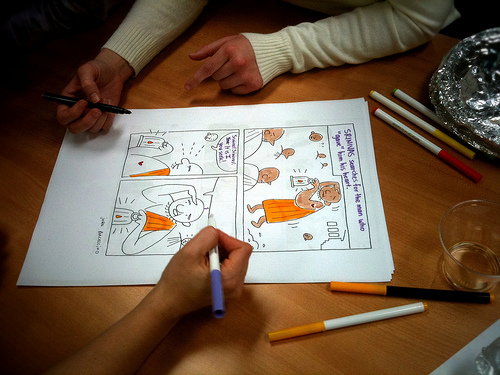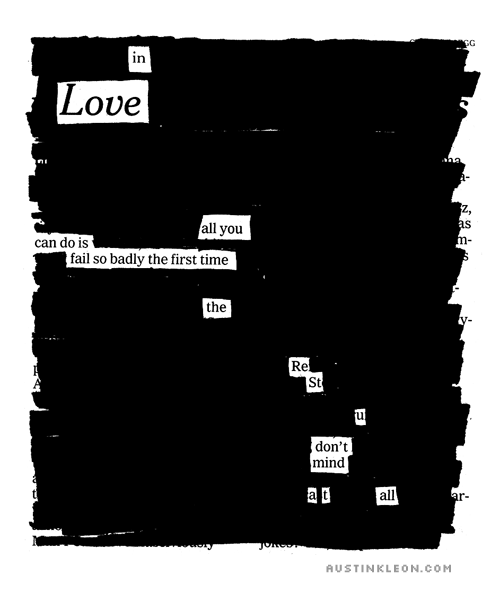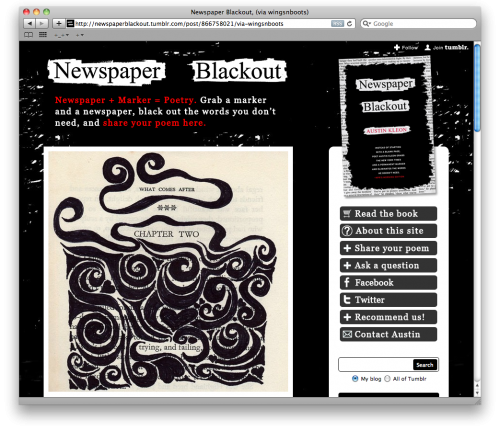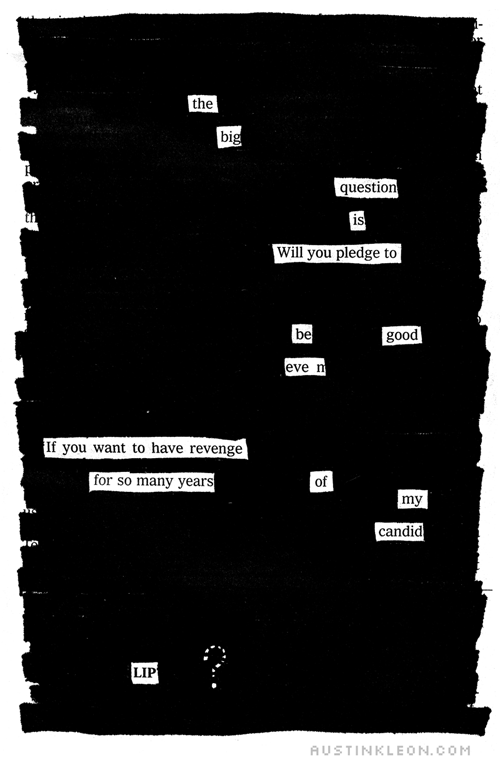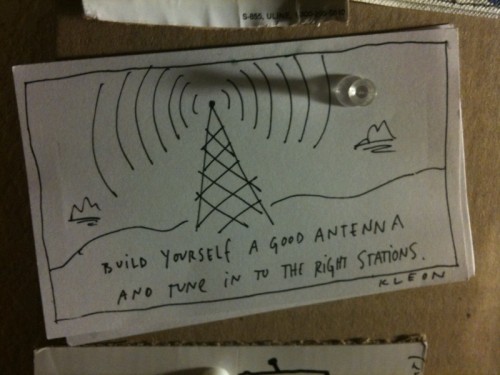At last week’s VizThink Austin (@VizThinkAustin on Twitter) my friend Sunni Brown asked me to give a variation of my Visual Thinking for Writers talk. Little did I know that Chris Haro of Mighty Pretty Media was going to be there taping, and he was kind enough to allow me to post it all online. I can’t imagine how much time it took him to edit 40 minutes worth of video, so thank you, Chris!
In the first three videos, I talk way too much about my writing background, then get on to good stuff, like how to use index cards to brainstorm ideas, using graphs to understand story structure, and the power of adding captions to pictures.
Thanks to Sunni, Chris, and the amazing group of folks who came out to listen to me chatter on! Here are some iPhone pics I took of them in action:
Y’all rock. I hope that those of you in the Austin area will come to the next Vizthink.
You can watch the videos below or in this Youtube playlist.
On discovering comics, visual thinking, and information design
From writer’s block to Newspaper Blackout
On story structure and Kurt Vonnegut’s story charts
The power of captions, and putting pictures and words together
